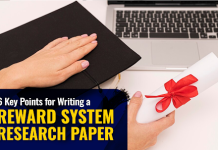The exploratory essay—a wondrous literary adventure that beckons us to embark on a journey of discovery and contemplation. As we delve into the realm of this captivating genre, we find ourselves immersed in a tapestry of ideas, perspectives, and untrodden paths. So, my inquisitive friend, are you ready to explore the uncharted territories of exploratory essay writing? If you find yourself whispering the words, “write me an essay now,” we shall navigate these uncharted waters together.
But first, let us unveil the essence of this enigmatic creature we call the exploratory essay. Unlike its argumentative cousin, the exploratory essay is a free-spirited form of prose that embraces curiosity and open-mindedness. It transcends the boundaries of conventional thesis-driven writing, allowing the writer to meander through ideas, thoughts, and possibilities without the burden of preconceived notions. It is an intellectual quest, an invitation to venture into unexplored intellectual realms.
You may wonder, why is it crucial to investigate multiple perspectives? Ah, this is where the true magic unfolds. By peering through different lenses, we gain the power of empathy, empathy that fuels understanding and bridges divides. We expand our intellectual horizons, unlocking doors to new insights and enlightenment. Investigating multiple perspectives is an exercise in critical thinking, a practice that sharpens our minds and nurtures our intellectual growth. In a world teeming with complex issues and diverse opinions, this ability becomes a beacon of light, guiding us towards a more nuanced understanding of the world.
Now, my fellow adventurer, you may ask, what is the purpose of this humble article that dances before your eyes? It is here to guide you, to equip you with the tools and insights needed to navigate the labyrinthine corridors of exploratory essay writing. Within these digital pages, we shall unravel the secrets of investigating multiple perspectives, unveiling a treasure trove of wisdom and techniques to hone your skills. So, if you dare to embrace the challenge, let us embark on this voyage of exploration together, for the beauty of the exploratory essay awaits us.
Table of Contents
Understanding the Exploratory Essay
The exploratory essay, a magnificent literary creature that dances with imagination and intellectual curiosity. Like a chameleon, it adapts to its surroundings, assuming various forms and characteristics. In essence, an exploratory essay is a captivating tapestry of exploration and contemplation, where the writer embarks on a quest to unearth hidden truths and delve into the depths of a topic. It is a symphony of curiosity, weaving together ideas, perspectives, and possibilities with an artistic flair.
Let us unravel the nuanced distinctions between the exploratory and argumentative essays. While the argumentative essay wields the sword of persuasion, aiming to convince the reader of a specific viewpoint, the exploratory essay is a gentle dance of exploration. It does not seek to prove a point or defend a position, but rather to unravel the complexities of a topic, to navigate the labyrinth of ideas without the constraints of predetermined conclusions. It is a harmonious symphony of intellectual inquiry and open-mindedness.
Picture this: a writer approaching a topic with a blank canvas, devoid of preconceived notions or biases. This is the essence of exploring a topic within an exploratory essay. It is a liberation from the chains of preconception, allowing the writer to delve into the subject with fresh eyes and an open heart. By casting aside biases, the writer becomes a curious wanderer, embarking on a journey of discovery, ready to embrace the unexpected, to question assumptions, and to embrace the complexity of the world.
Benefits of Investigating Multiple Perspectives
The wondrous benefits that await those who dare to investigate multiple perspectives! At the forefront, fostering critical thinking skills takes center stage. By engaging with diverse viewpoints, the writer hones their analytical prowess, sharpening the ability to evaluate evidence, identify logical fallacies, and discern the strengths and weaknesses of various arguments. It is a mental workout, strengthening the muscles of reason and discernment.
But the benefits do not end there, my curious friend. Investigating multiple perspectives infuses depth and richness into the fabric of research. It is like exploring a vast library of knowledge, gathering insights from a myriad of sources, each offering a unique lens through which to view the world. The depth of research expands, and the essay becomes a tapestry woven with threads of wisdom from all corners of thought.
As we venture deeper into the realm of investigating multiple perspectives, a magical transformation takes place within the writer—a blossoming of empathy and understanding. Through the exploration of diverse viewpoints, we begin to see the world through different eyes, to grasp the intricacies of the human experience. It is a bridge that connects hearts and minds, fostering compassion and nurturing a profound understanding of the complexities of our shared existence.
The doors of open-mindedness swing wide open, revealing a vista of intellectual growth that stretches far beyond the horizon. By embracing multiple perspectives, we challenge our own beliefs and expand the boundaries of our knowledge. It is an invitation to embrace the unknown, to welcome intellectual growth with open arms. With each exploration, our minds stretch and grow, like a sapling reaching for the sky, thirsty for enlightenment.
Approaches to Gathering Multiple Perspectives
The first approach, a cornerstone of exploration, is to conduct extensive research from various sources. Cast a wide net, my seeker of knowledge, exploring books, scholarly articles, reputable websites, and even reputable online forums. The world is your oyster, teeming with information waiting to be discovered.
To truly understand diverse perspectives, seek out the voices of experts and individuals with unique viewpoints. Interviews become a key to unlocking new insights, providing firsthand accounts and personal narratives that enrich the fabric of your exploratory essay. Let their wisdom and experiences guide you on your journey.
Analyzing historical, cultural, and social contexts adds layers of depth to our exploration. Uncover the roots of ideas, trace the evolution of beliefs, and illuminate the tapestry of human history. Context becomes the fertile ground from which understanding blossoms.
Surveys and questionnaires, the tools of gathering data, become valuable companions on our quest for multiple perspectives. With thoughtful design, these instruments provide quantitative and qualitative insights, shedding light on the diverse opinions and experiences of others. Let the data guide you, like stars in the night sky, leading you to a deeper understanding.
Finally, do not discount the power of personal experiences and anecdotes. Your own encounters and reflections offer a unique lens through which to view the world. Share your stories, intertwine them with the narratives of others, and watch as your essay takes flight, becoming a tapestry of personal and collective experiences.
Presenting Multiple Perspectives in Writing
Organizing ideas becomes the brushstroke that paints a harmonious picture of exploration. Arrange your thoughts with intention, allowing each perspective to find its rightful place, creating a seamless flow that captivates your reader’s imagination.
Fairness and objectivity become our guiding principles as we introduce each perspective. Like a gracious host, extend a warm welcome to every viewpoint, treating them with equal respect and consideration. Approach them with an open mind, allowing the essence of each perspective to shine through, unclouded by personal biases or preconceptions.
Evidence and examples—our allies in presenting multiple perspectives. Support each viewpoint with a rich tapestry of factual evidence and compelling examples. Let them breathe life into your words, anchoring your exploration in a solid foundation of authenticity and credibility. Through the lens of evidence, your essay becomes a beacon of intellectual integrity.
Acknowledge the skeptics and the dissenting voices, for they too have a place within the realm of multiple perspectives. Address counterarguments and potential criticisms with grace and finesse. Engage in thoughtful dialogue, presenting compelling counterpoints that challenge your own beliefs. By embracing the power of constructive criticism, your essay becomes a stronghold of intellectual rigor.
Within the symphony of multiple perspectives, we find both areas of consensus and divergence. Highlight these moments of unity and disagreement, celebrating the nuances that make our exploration rich and vibrant. Seek the common threads that weave through diverse viewpoints, while honoring the unique hues that set them apart. Illuminate the beauty of diversity and the complexity of human thought.
Potential Challenges and Pitfalls
Beware the treacherous path of personal biases and subjective judgments. As you navigate the terrain of multiple perspectives, strive for impartiality and intellectual honesty. Shield yourself from the seductive whispers of personal bias, allowing your exploration to be guided by reason and evidence rather than preconceived notions.
In the labyrinth of information, conflicting voices emerge, demanding our discernment. Navigate with care, my intrepid explorer, as you encounter conflicting information and unreliable sources. Sharpen your critical thinking skills, scrutinize the reliability and credibility of sources, and tread with caution. Let truth be your guiding star, leading you through the haze of uncertainty.
Some topics are more delicate than a butterfly’s wing, requiring sensitivity and finesse. When handling sensitive or controversial topics, approach with empathy and compassion. Respect the lived experiences and emotions that intertwine with these subjects, nurturing a space for open dialogue while maintaining respect for all perspectives involved.
As you embark on the journey of presenting multiple perspectives, tread the tightrope between exploration and coherent argumentation. Strive to strike a delicate balance, weaving together the diverse voices while maintaining a clear and logical structure. Let the exploration of perspectives enrich your argument, amplifying its strength and power.
Tips for Effective Exploratory Essay Writing
Set sail on your essay voyage with a compelling and open-ended question or thesis, a beacon that ignites curiosity and invites readers to join your exploration. Allow your question to be the North Star that guides your inquiry, illuminating the path ahead.
Maintain a steady course as you navigate the seas of writing, embracing a clear and logical structure. Let your ideas flow in a harmonious progression, connecting one thought to another like the notes of a melody. A well-structured essay becomes a vessel that carries your reader on a captivating journey.
Diversify your sources like a masterful chef, drawing ingredients from a variety of reliable sources. Savor the richness of scholarly articles, books, reputable websites, and expert interviews. Let the flavors of these sources blend together, creating a symphony of information that nourishes your exploration.
Provide context and background information as you introduce each perspective. Paint a vivid picture of the historical, cultural, or social landscape that shapes each viewpoint. By unveiling the context, you invite your reader to step into the shoes of different perspectives, deepening their understanding of the complexities at hand.
The final brushstroke on your exploratory masterpiece is revision and editing. Polish your essay, honing its clarity and coherence. Trim excess verbiage, refine your arguments, and ensure that your words dance harmoniously on the page. With each revision, your essay shines brighter, revealing the depth and beauty of your exploratory journey.
Throughout our journey, we have unraveled the true essence of the exploratory essay—a genre that embraces curiosity, open-mindedness, and the pursuit of knowledge without preconceived notions. We have recognized the importance of investigating multiple perspectives, for it fosters critical thinking, enhances the depth of research, nurtures empathy, and promotes intellectual growth.
With each step, we have learned how to gather multiple perspectives, utilizing extensive research, engaging in interviews, analyzing historical and social contexts, and incorporating personal experiences. We have faced challenges along the way—avoiding personal biases, navigating conflicting information, and handling sensitive topics—but we have emerged wiser, more discerning, and adept at striking a balance between perspectives and forming a coherent argument.








